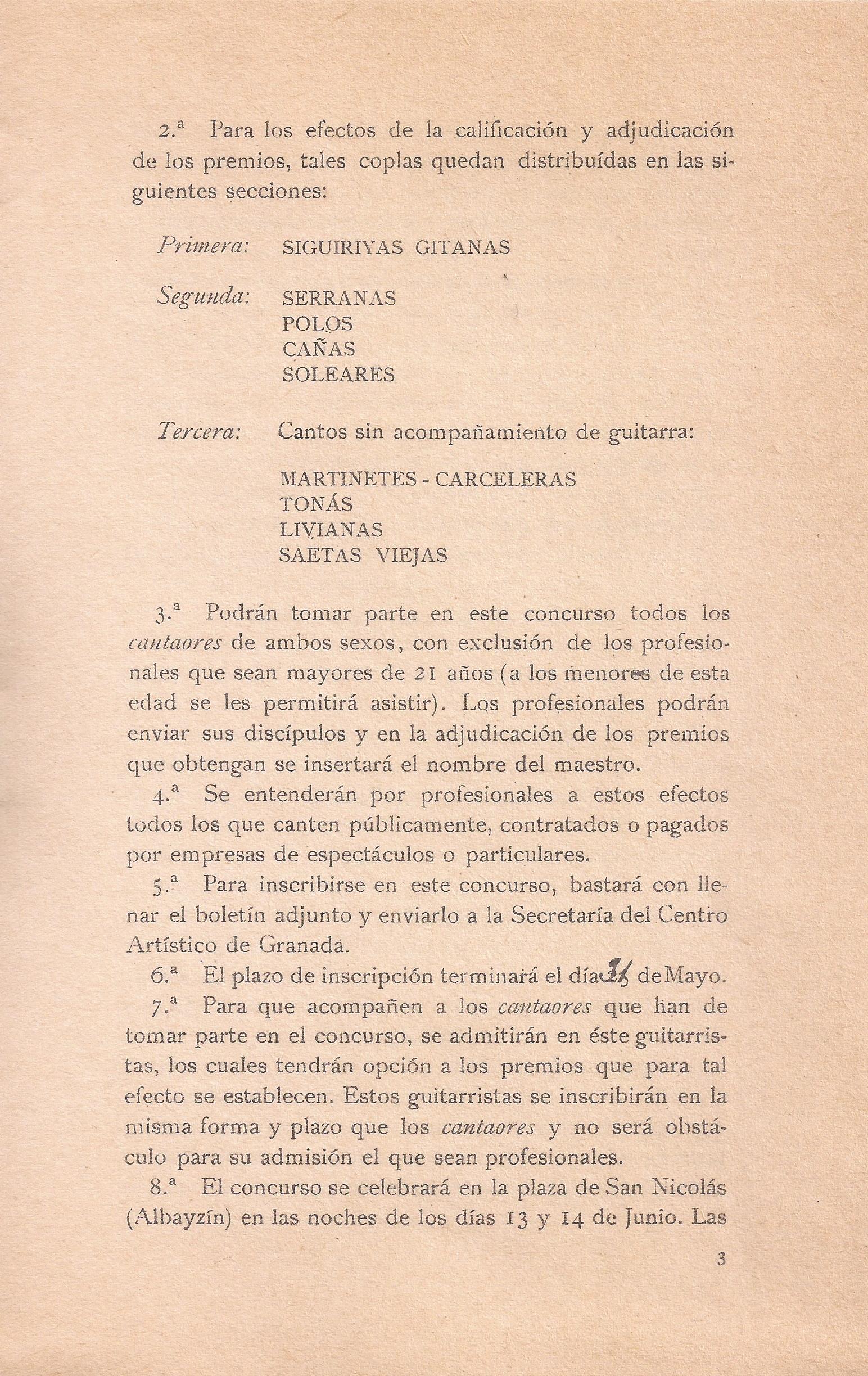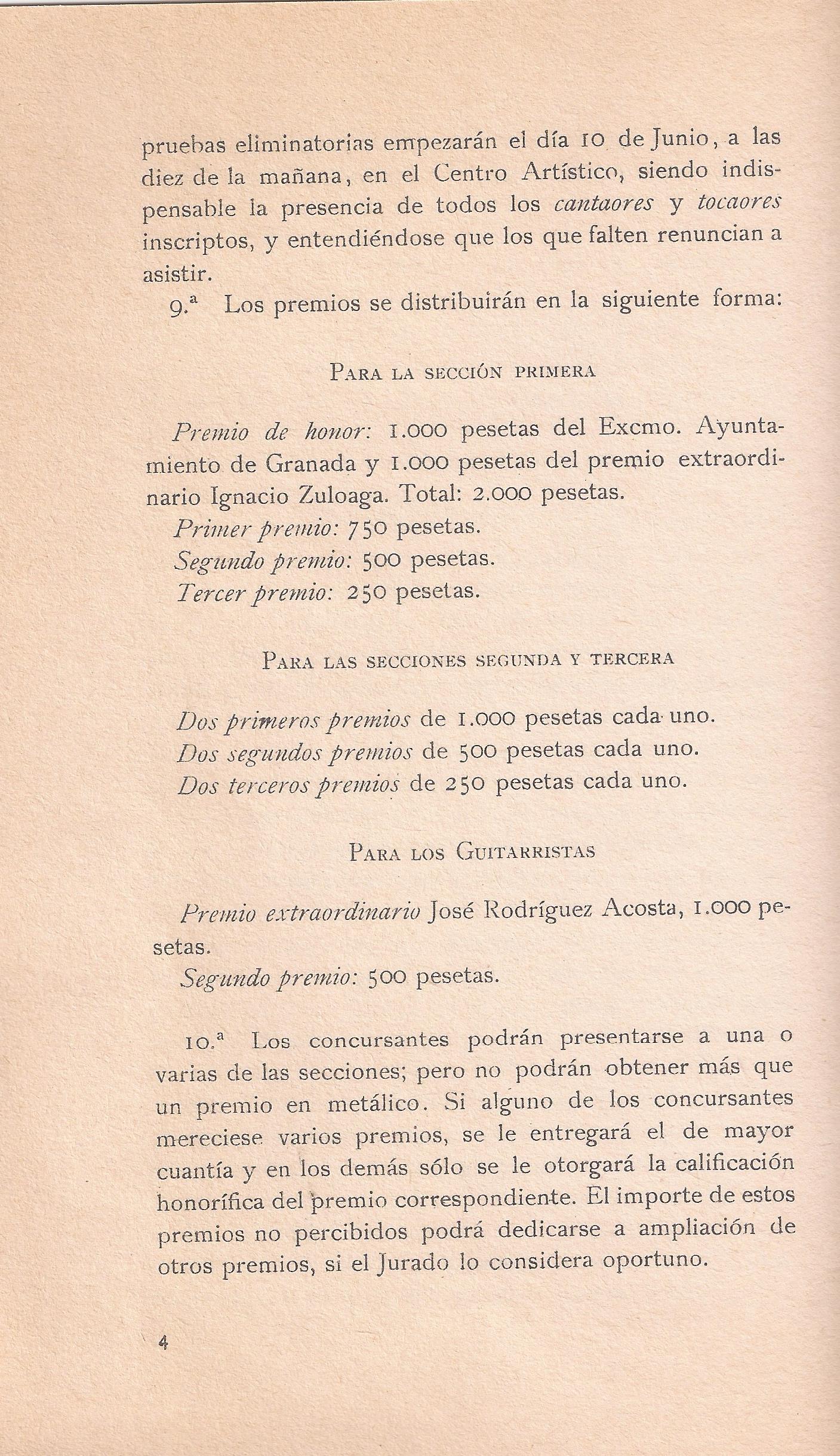Contrary to the opinion of defeatists like Valladar, the square resisted. Federico García Lorca himself wrote: “Fortunately the cistern did not sink and it was a party with moon and rain […]. Now I remember as if in a dream (why so far away?) the formidable Macarrona and the old singer from Puente Genil, the cornerstone of Cante jondo. RAMÓN, the wonderful chronicler of El Pombo, said that the only thing missing from the festivities was the absence of the best singer who is currently serving a life sentence in the Ocaña prison”.
The jury of the Flamenco Song Contest met the next day and decided to award the Zuloaga prize of one thousand pesetas to Diego El Tenazas; another of the same amount to Manolo Caracol; three of 500 to the girl Carmen Salinas, to Frasquito Yerbabuena and to José Soler, from Linares. The 300 “to Miss Gazpacha” and the 125 to the girls Concha Sierra and La Goyita. The guitar prize of 500 pesetas went to José Cuéllar and the 250 to Niño de Huelva. La Macarrona, the Niño de Jerez and other artists collected their contracts.

From there began an eternal undertow of reflections, praise and controversy that still lasts. On June 28, in La Voz, Chacón, interviewed by Luis Bagaría, declared: “You will not deny that it is also a great sadness that such illustrious artists have to come to give us a hand and lift us up from the decline into which we have fallen. It is sad that we alone couldn’t lift ourselves up. Every day I can explain less and less […] why the memory of the famous seguiriyas (form of flamenco music in the seep song category) of Curro Dulce and, in general, all the songs of Silverio Franconetti have been lost, except for the fear of not being able to overcome the great difficulties they had”.

After the one in Granada, other contests followed. The first one in Seville, amidst protests from the fans for taking songs out of their intimate and closed spaces. Then there were other contests and replicas. According to Manuel de Falla, a popular contest was prepared in Cádiz, as well as in Jerez and Sanlúcar, and even in some neighborhoods of Seville despite “the hostility of certain Sevillians…”. There was also a replica in Madrid and one, quite bizarre, in Granada, of “English and Scottish singers” that left Falla perplexed. “Numerous Scots with their calves uncovered,” Ramón writes, “are going to get off the train tomorrow or the day after with their bagpipes on their shoulders, with their bagpipes like bitches with many nipples.”